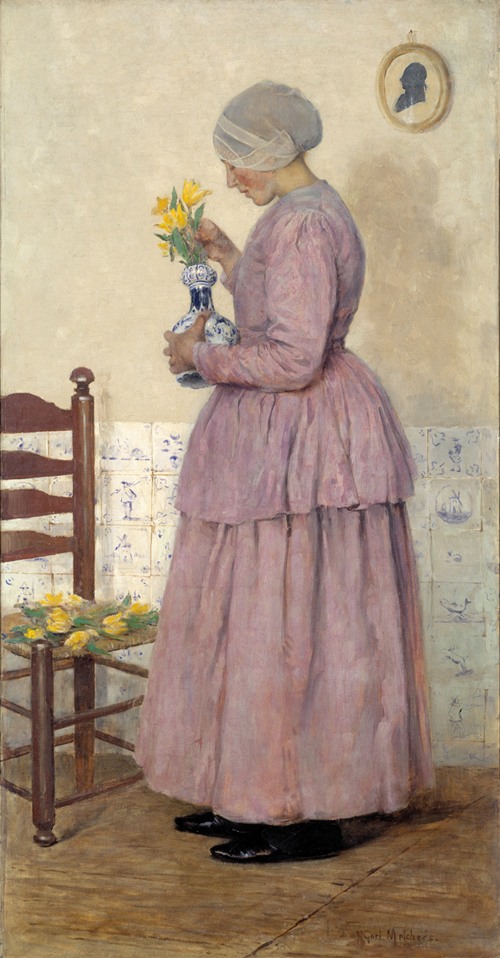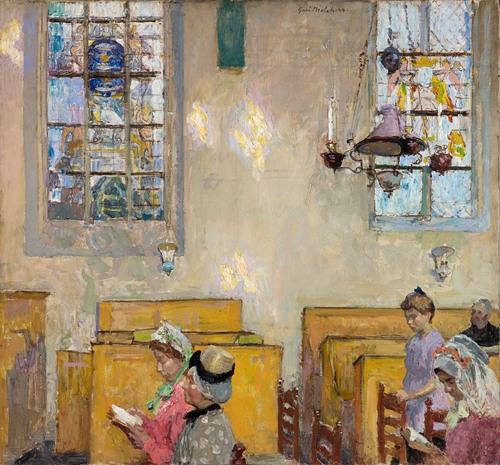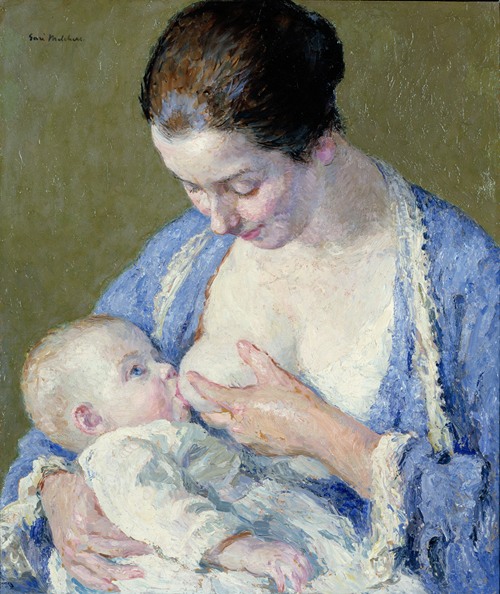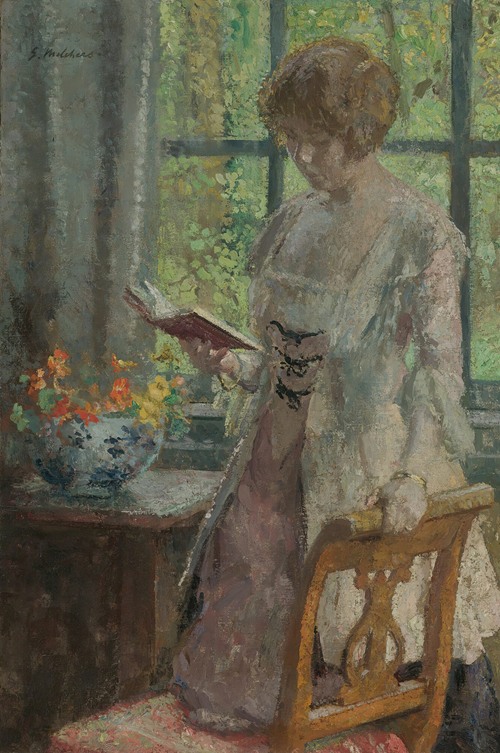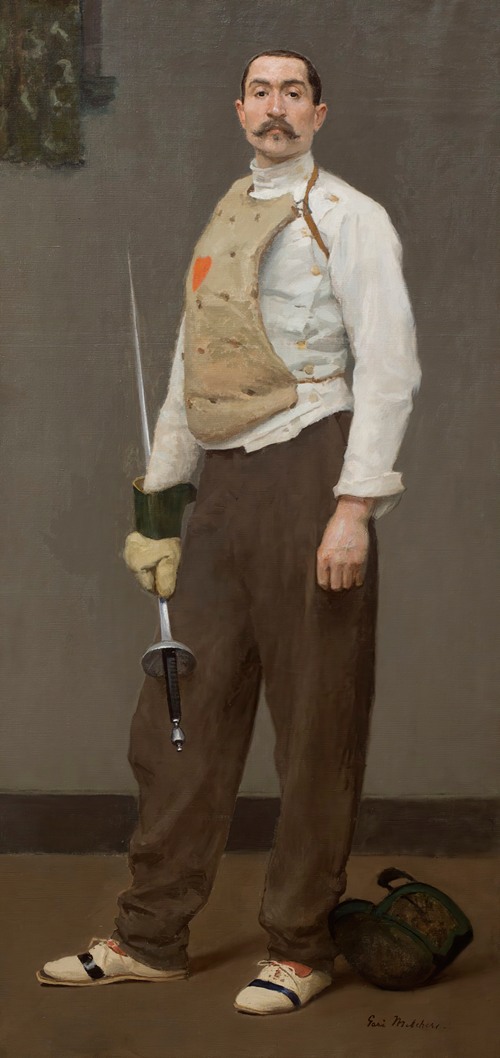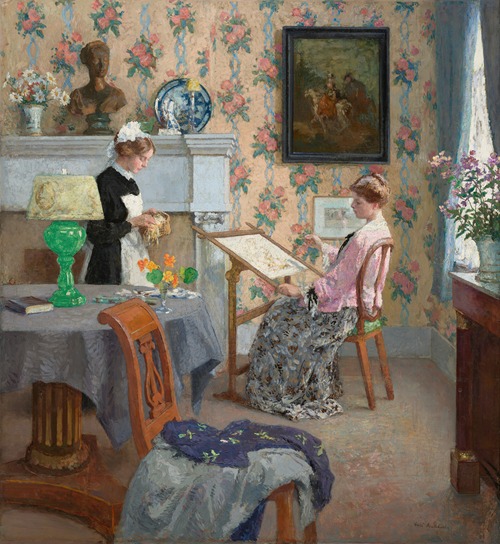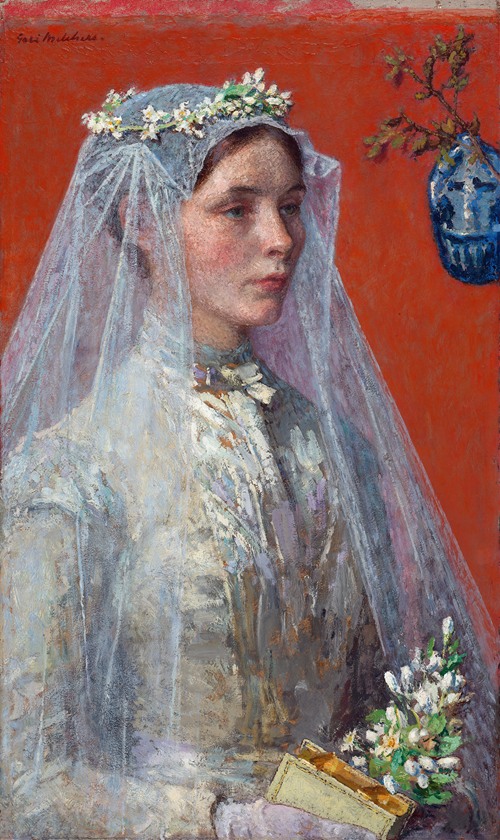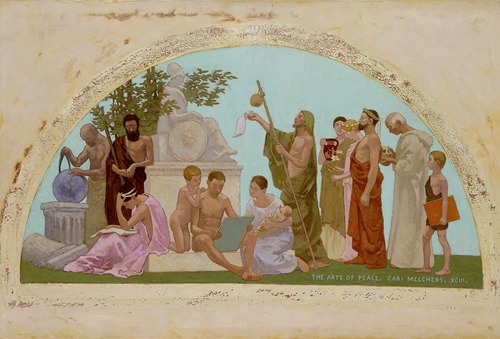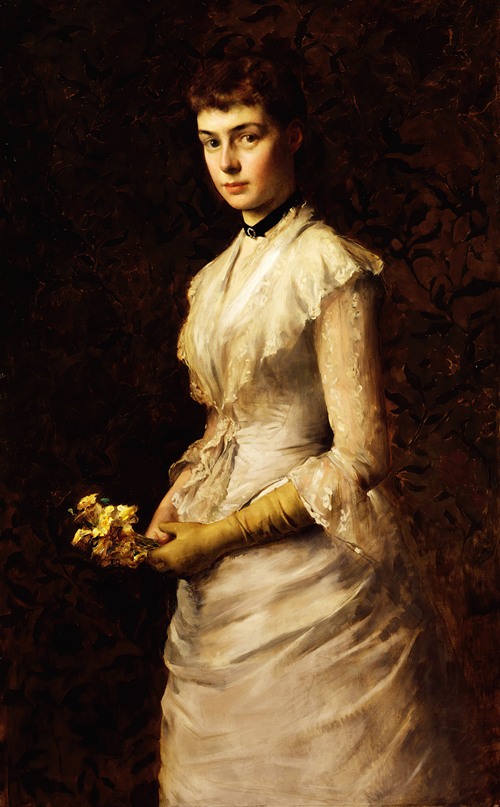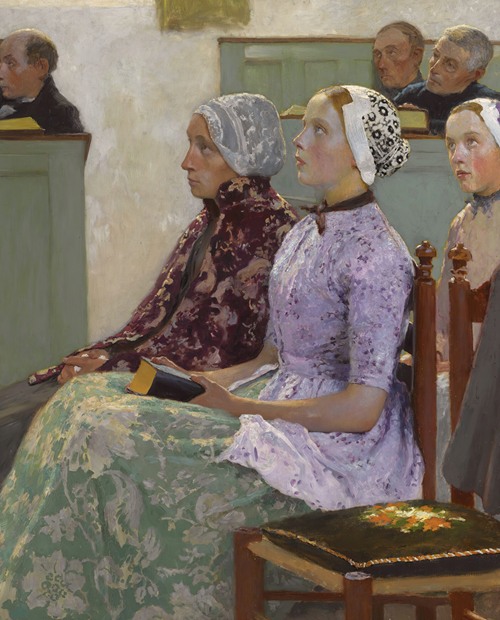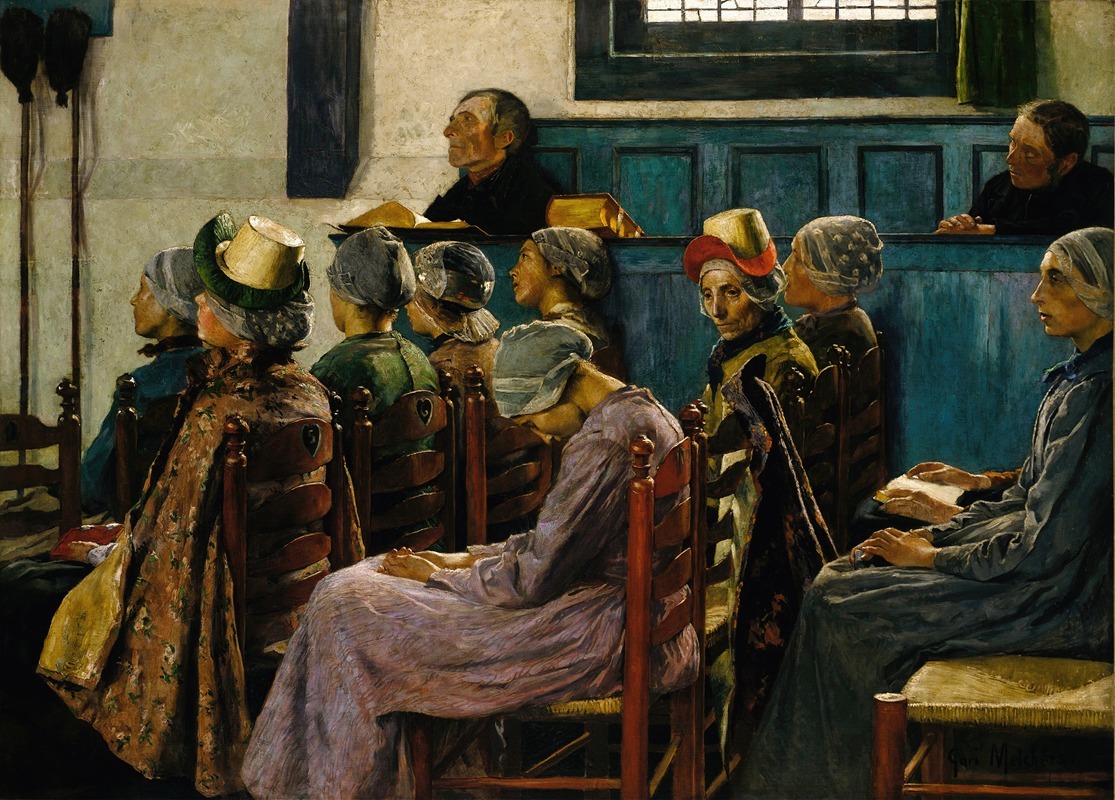
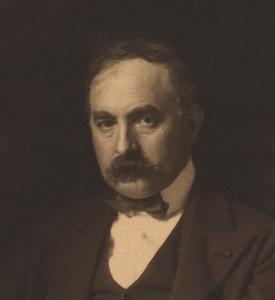
Julius Garibaldi Melchers was an American artist. He was one of the leading American proponents of naturalism. He won a 1932 Gold medal from the American Academy of Arts and Letters.
The son of German-born American sculptor Julius Theodore Melchers, Gari Melchers was a native of Detroit, Michigan, who at seventeen studied art at the Kunstakademie Düsseldorf under von Gebhardt and is associated with the Düsseldorf school of painting. After three years went to Paris, where he worked at the Académie Julian, and the Ecole des Beaux Arts, where he studied under Lefebvre and Boulanger. Attracted by the pictorial side of Holland, he settled at Egmond. In 1882, Melchers presented The Letter, painted the previous year in Brittany, at the Paris Salon; this first presentation by a young artist was well received. In 1884, he founded an art colony at Egmond aan Zee in the Netherlands with American artist George Hitchcock. His first important Dutch picture, The Sermon, brought him favorable attention at the Paris Salon of 1886.
He became a member of the National Academy of Design, New York; the Royal Academy of Berlin; Société Nationale des Beaux Arts, Paris; International Society of Sculptors, Painters and Gravers, London, and the Secession Society, Munich; and, besides receiving a number of medals, his decorations include the Legion of Honor, France; the order of the Red Eagle, Germany; and knight of the Order of St Michael, Bavaria. In 1889, he and John Singer Sargent became the first American painters to win a Grand Prize at the Paris Universal Exposition. His paintings from the World Columbian Exposition (1893) held in Chicago are now in the Library at the University of Michigan in Ann Arbor.
In 1903, he married Corinne Lawton Mackall, a Baltimore painter born in 1880, who studied at the Maryland Institute Practical School for the Mechanic Arts and at the Académie Colarossi. Mackall was 20 years younger than her husband.
In 1904 he was named an Officer in the French Legion of Honor. In 1909 he was appointed Professor of Art at the Grand Ducal Saxony School of Art in Weimar, Germany. In 1915 he returned to New York City to open a studio at Abraham Archibald Anderson's Bryant Park Studios building. From 1920 to 1928 he served as the president of the New Society of Artists. He was a member of the Virginia Fine Arts Commission and a trustee of the Corcoran Gallery of Art. He served as chairman of the Art Committee of the Smithsonian American Art Museum.
He spent his final years at Belmont Estate in Falmouth, Virginia, near Fredericksburg. He died there on November 30, 1932.
